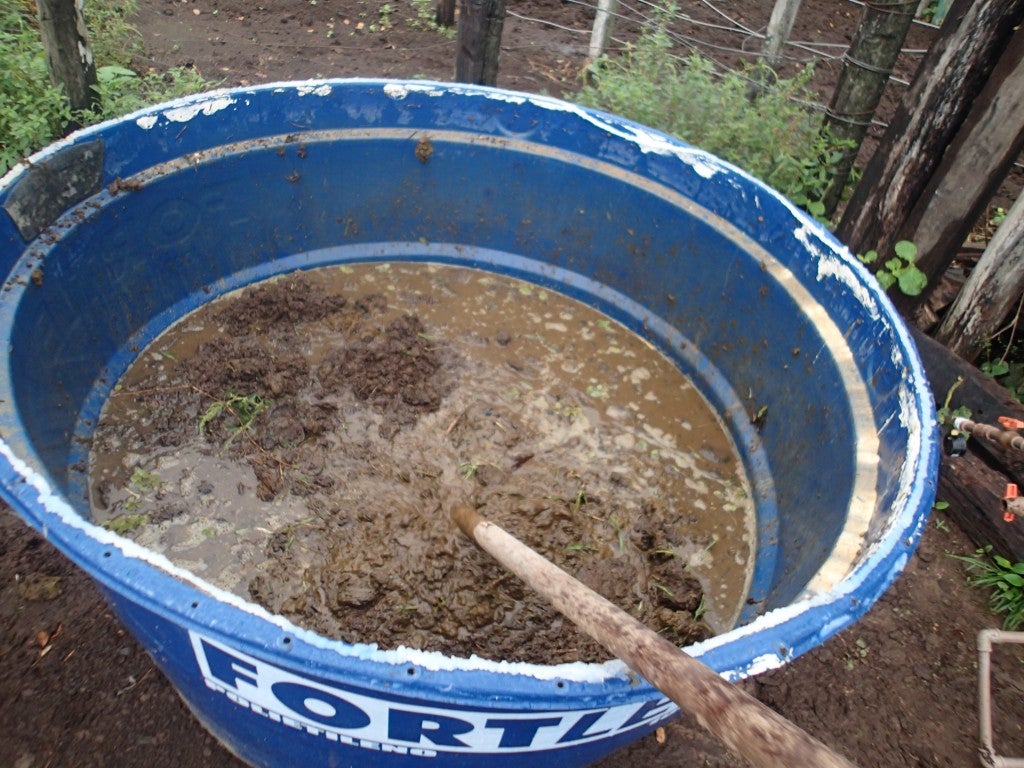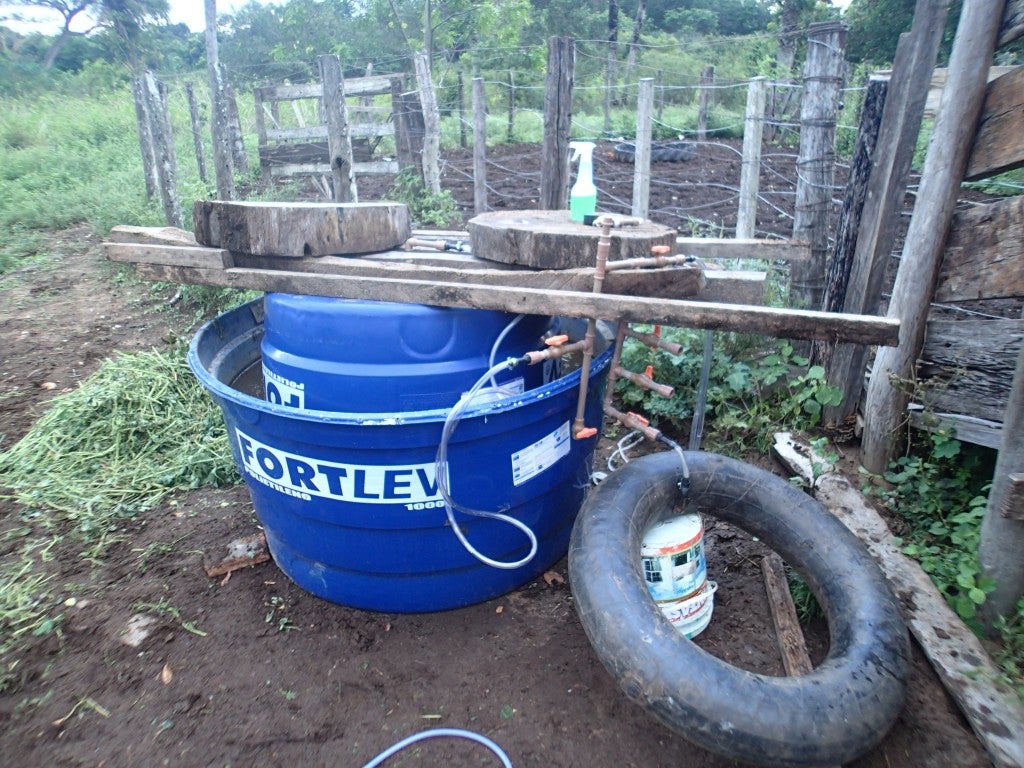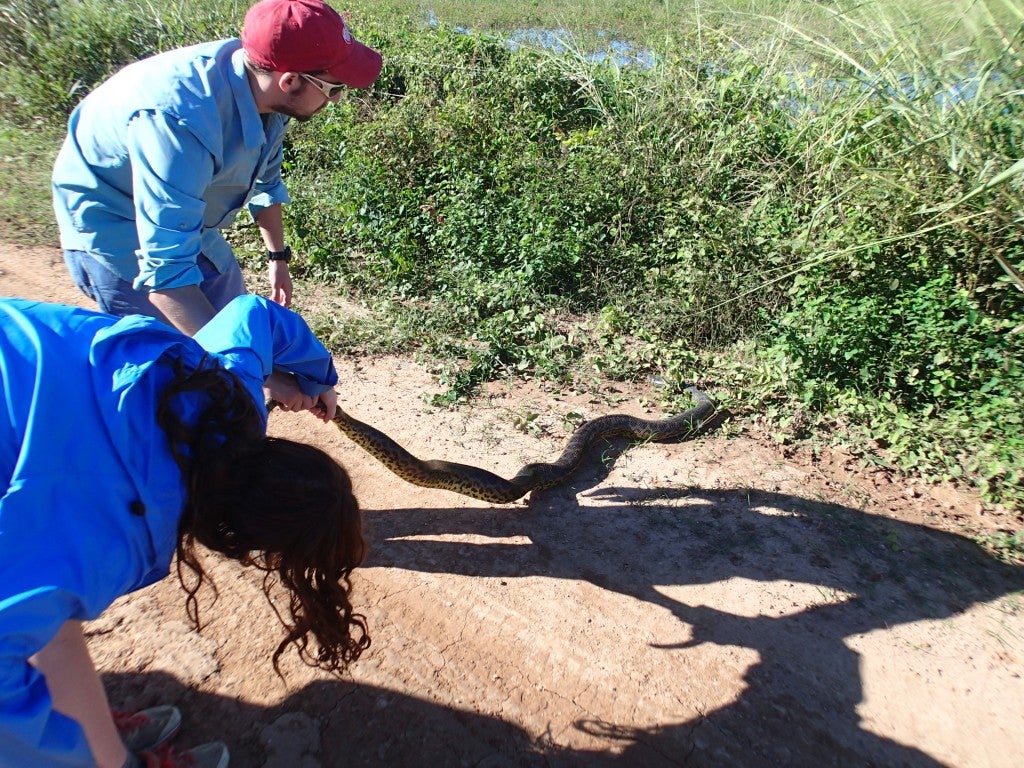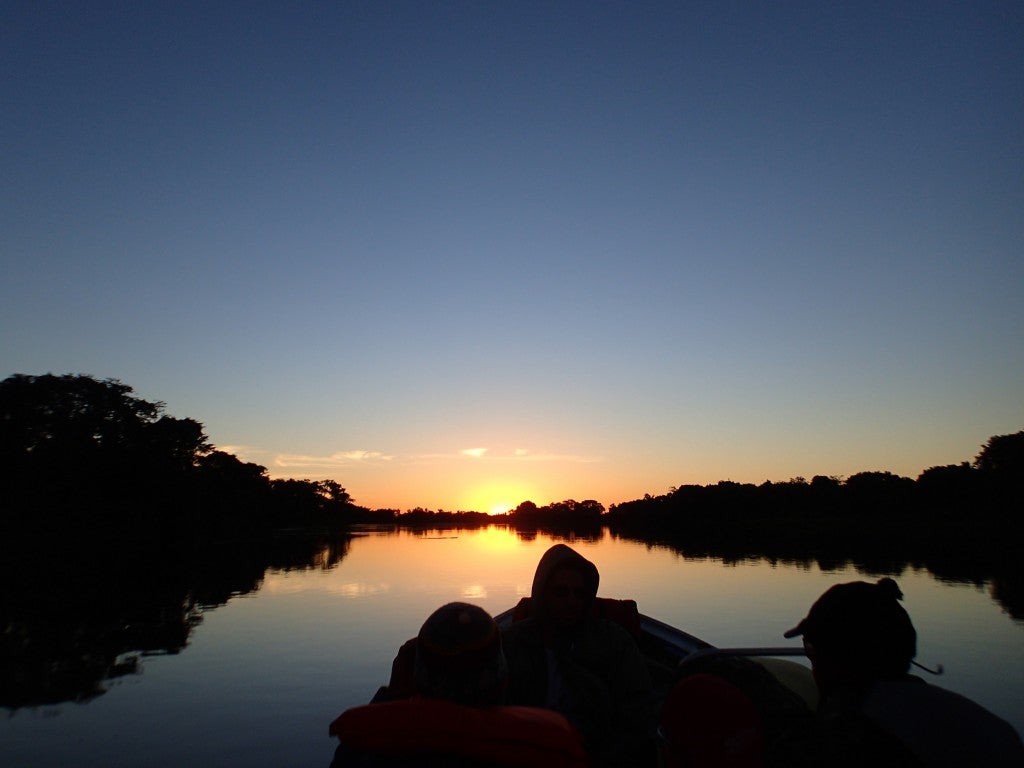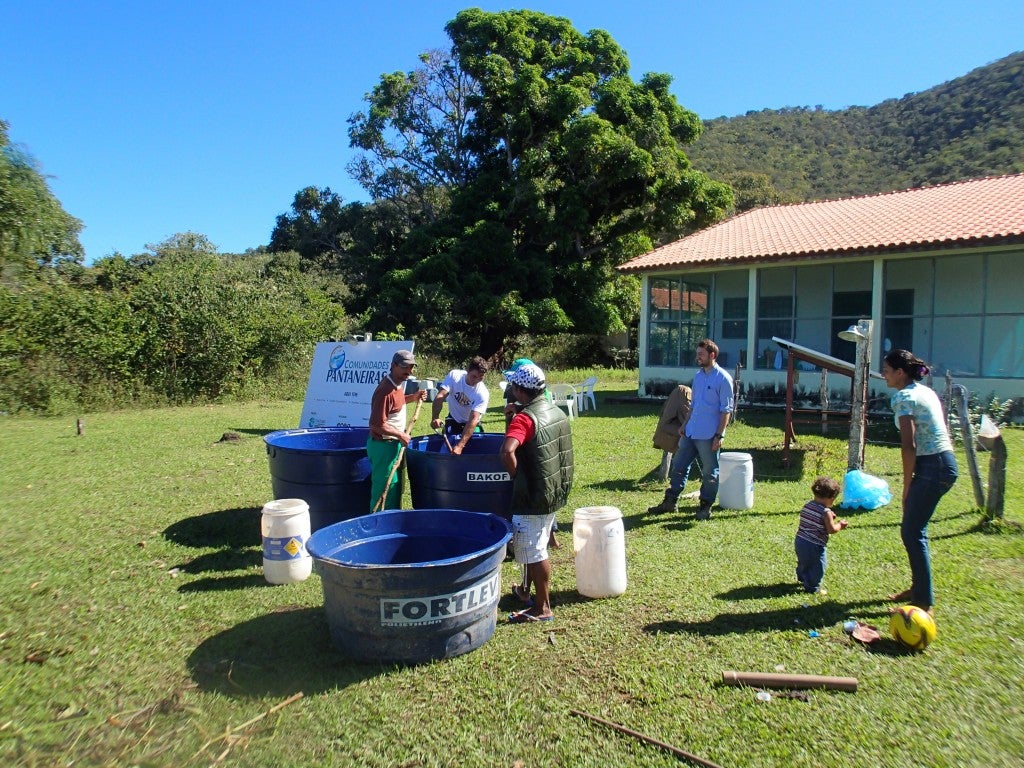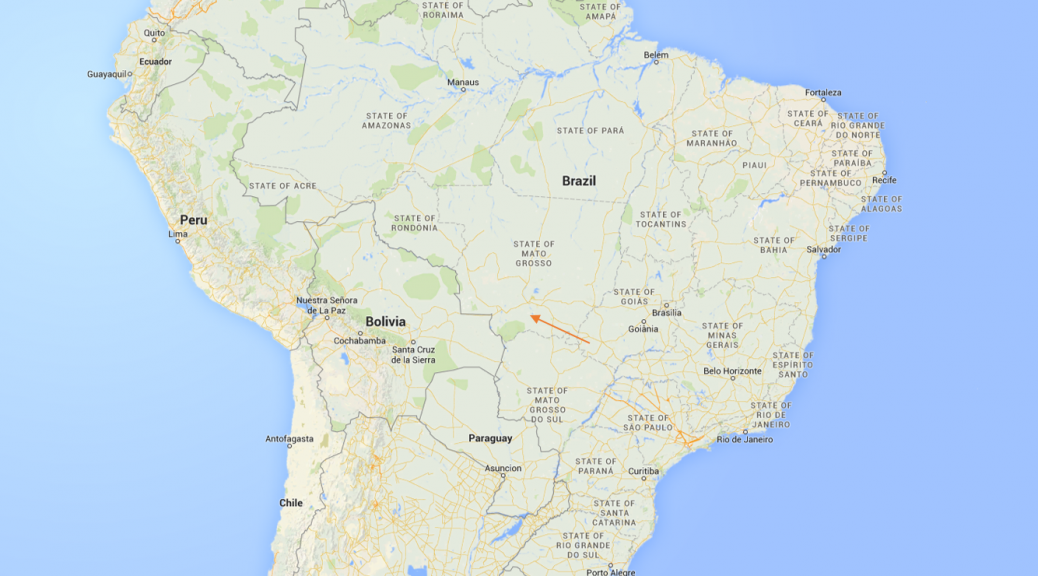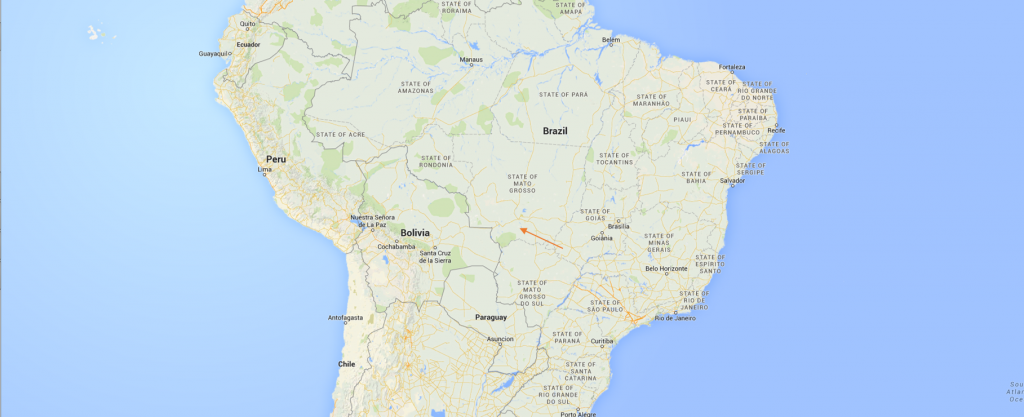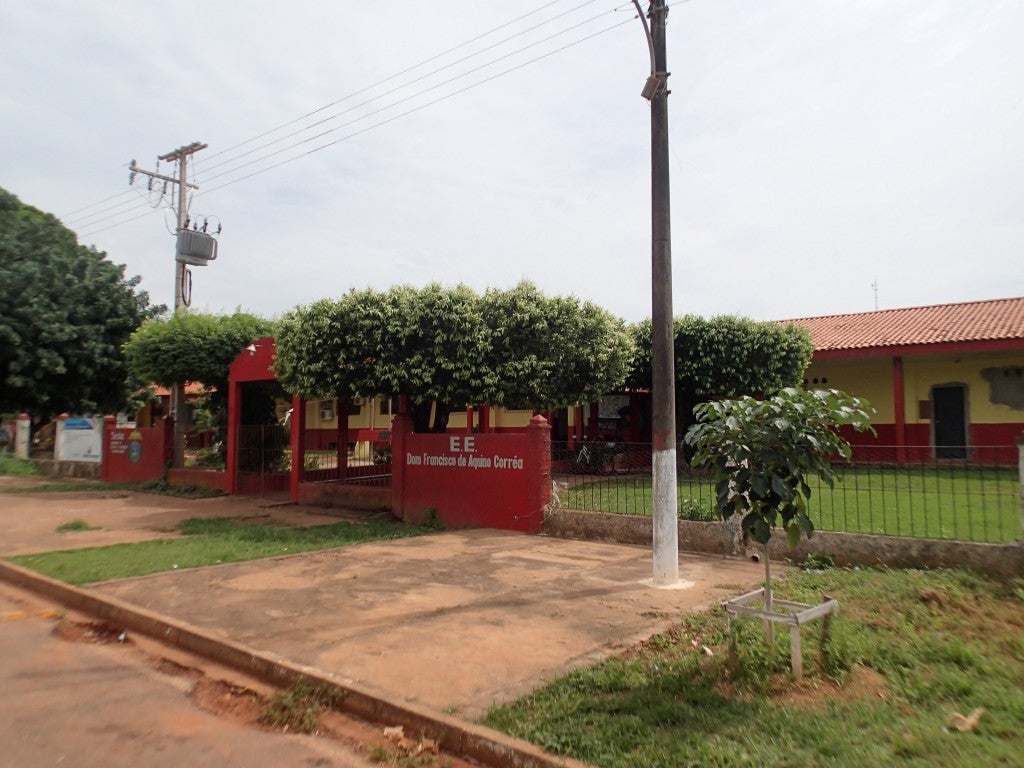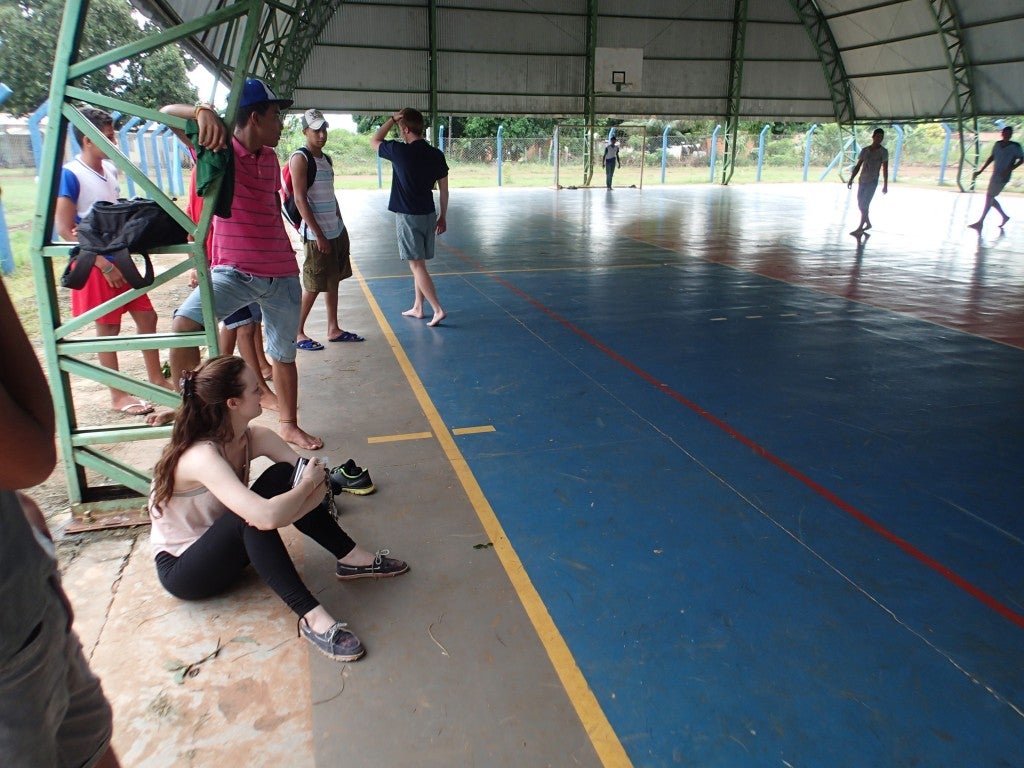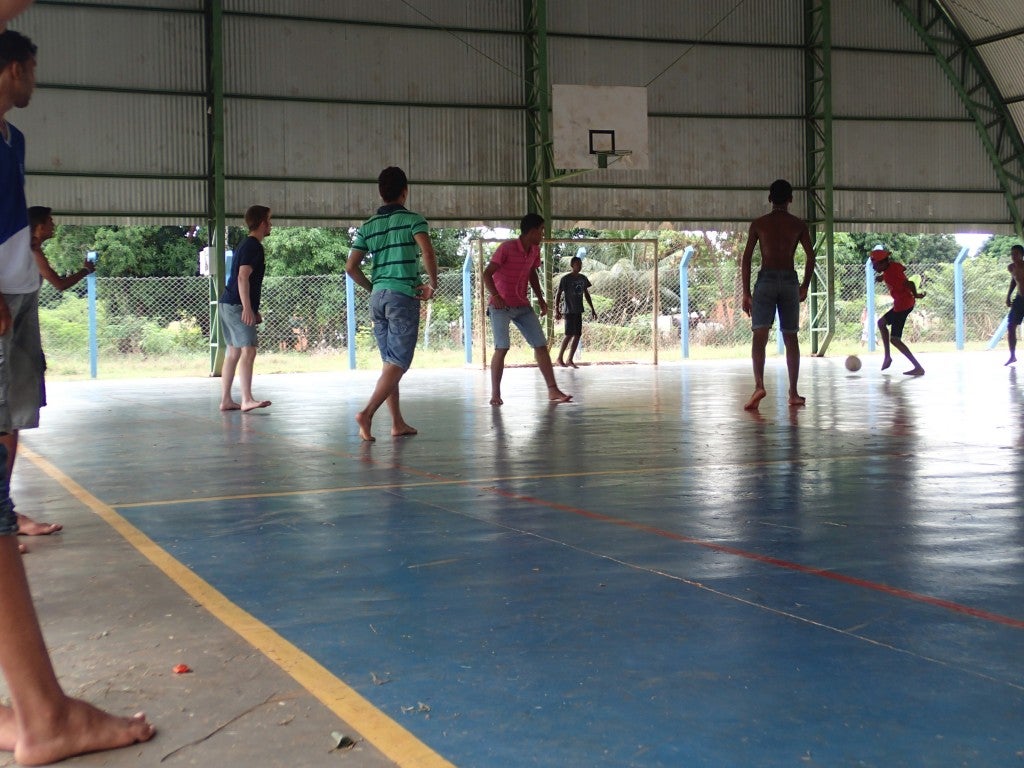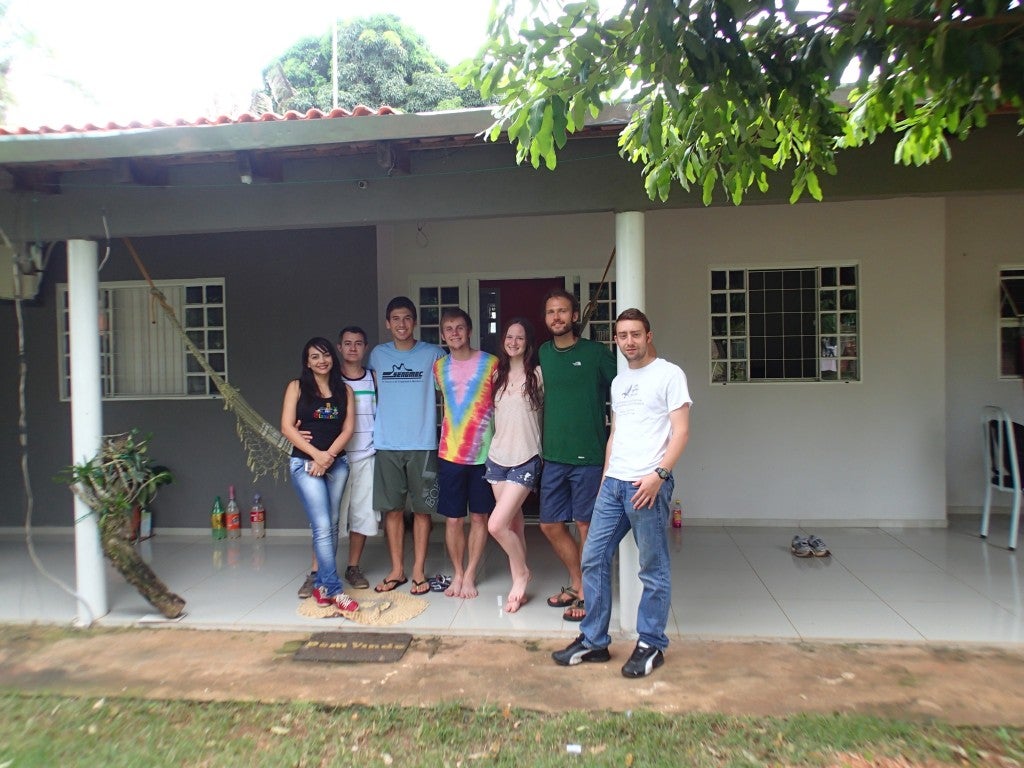continuing…
After this we spent about at week at the Pantanal Center for Education and Research (PCER), where we experimented with biodigester designs using locally available materials, and constructed a biodigester with gas lines to the house, so future student groups at PCER can use biogas for cooking. There is plenty of manure from the cows at PCER, but the nearest city, Pocone, is a ~ two hour drive on the Transpantananal highway (which is not a highway at all, but a dirt road that is impassible after a heavy rain). So planning out which needed materials to buy in town took some thought. Especially with everything in Portuguese, not English, of course.
Our original design idea was to use one of these water tanks (Caixa de agua) to make a large biodigester: seal the top to make it airtight, have an opening to add more manure in the top, and a valve at the bottom to drain things. This was the idea:
After trying with lots of silicone and PVC glue and rubber innertubes cut up, we still found a few leaks in the seal of the top. There is basically no tolerance for leaks, since the gas production rate is so low. Any small leak at all would mean the gas would leak out instead of pressurizing the innertube and/or flowing to a stove. We decide to change to a “two-bucket” design which uses more materials (needs an extra bucket), but is pretty foolproof.
Here are some pictures of the biodigester at PCER with attached innertube for gas storage. We also ran a gas line to the house so that the next group could just start using the gas produced to cook with.
After PCER we caught a ride to the river and then went via boat to the ECOA station, about 3 or 4 hours down river. Saw some cool things on the way.
The original plan for the trip was to camp at two or three of the communities on the river, teach them about how a biodigester works, and help build a few small and one large one at each place. However, the flood this year was one larger than normal and this changed our plans – the places that we had planned to stay turned out to be under water. The Paraguay river floods seasonally in the region – its a wetland – but this year was the highest water since the flood 30 years ago that partially changed the course of the river. So we ended up going to the ECOA base, staying there, and having people from the surrounding communities come there by boat.
The first group had about 10 or 12 people, and we spent three afternoons working with them. We made one large biodigester and some other smaller ones and filled them with water hyacinth (aguape) and manure.
While putting these together and talking about how biodigesters work, I kept thinking about the question will this be useful for the people living here? What is the utility of doing this in relation to the big picture of sustainable such and such ? (most people are subsistence fishermen and gardeners, its a 4 hr boat ride to the closest city where there is a store). It was really great to learn more about ECOA. This nonprofit was originally started 15 years (approx) ago (can’t remember, may have been longer). At the time there was a movement of commercial agriculture coming into the region. When the floods recede, the land is very fertile and is supposedly great for growing crops. Then, of course, it floods again the next year and the cycle continues. The local people, who are small in number (only a few hundred) and whose families have lived in the area for quite some time, did not want large scale farming operations coming in to use the land. It would force them out of the places they had been living and had established their communities. Conservation groups were also opposed to it, for reasons of polluting a large water source, destroying ecosystem diversity, etc. There are also coal resources in the area that could be accessed via mountain-topping or similar techniques that are very devastating to the environment, and some groups proposed mining the area as an energy resource. In response, there was a an outbreak of wild fires, most likely set by local residents. The fires can get large in the dry season (it doesn’t rain for several months around August). Most of the commercial operations pulled out for the time being after much of the land they had planned to use had been devastated by fire. The route taken was obviously not a good solution to the problem.
ECOA was formed to give the small local communities a voice in the local government to prevent things like purposely set wild fires from happening again. Two schools were established (none existed before), a community center on the river was built, and awareness was spread to people living in the city. With the ability to organize and spread awareness, no more wild fires happened and commercial operations mostly left. Now, in 2014, ECOA still has a similar goal, which is one I really agree with: promote conservation by empowering the locals to stand up for the land they have been on for generations and wish to preserve.
The biodigester project as well as the other projects with Michigan students (water filtration and wind turbines) fit into this goal. Currently everyone living in the region is not actually employed according to the government, and they get an equivalent of welfare.. It’s not much of course, but it does enable the people to buy a few things from the city. Most people are fishermen and their only source of income is occasionally selling a fish or two to tourists passing by on boats. Other than that, life is very simple and people grow, build, and catch what they need to live (although it can be a pretty tough place sometimes, like when the waters were way high). There are some things that people still buy from the city though that have a large impact on their quality of life. Basic food staples of rice and beans, gasoline for boat motors, and propane for cooking fall into this category. Being able to cook with gas instead of wood is an awesome thing, especially when mosquitos are bad at the end of the wet season so that gathering firewood becomes tough, or when the water is high and there is hardly any dry ground and dry wood around.
So, for these reasons the people somewhat depend on the government welfare. Being able to buy a few things from the city greatly improves their quality of life. Following on that, simple logic would say that moving closer to the city would make life easier. The net effect of receiving help from the government for people living in this remote area ends up being to promote people moving away from the area. And if the communites become deserted, it then becomes much more possible for something like industrial agriculture, mountain coal mining or other environmentally destructive practices to move in.
The biodigester project is a technology that allows people to produce something that improves their quality of life, instead of relying on government welfare so that they can purchase it. The “sustainable” part isn’t the immediate effect of reducing carbon emissions, but the long-term effect of empowering people in the region with ways to improve their quality of life without relying on support from the government. And this in turn will make it more likely that they will be able to continue living in the area and stand up for their interests in preservation. After learning the whole story I was especially glad to be a part in the project.
Thats all for now… another post or two to come about the rest of the trip. Here’s a good pic of the view of all the water at sunset


